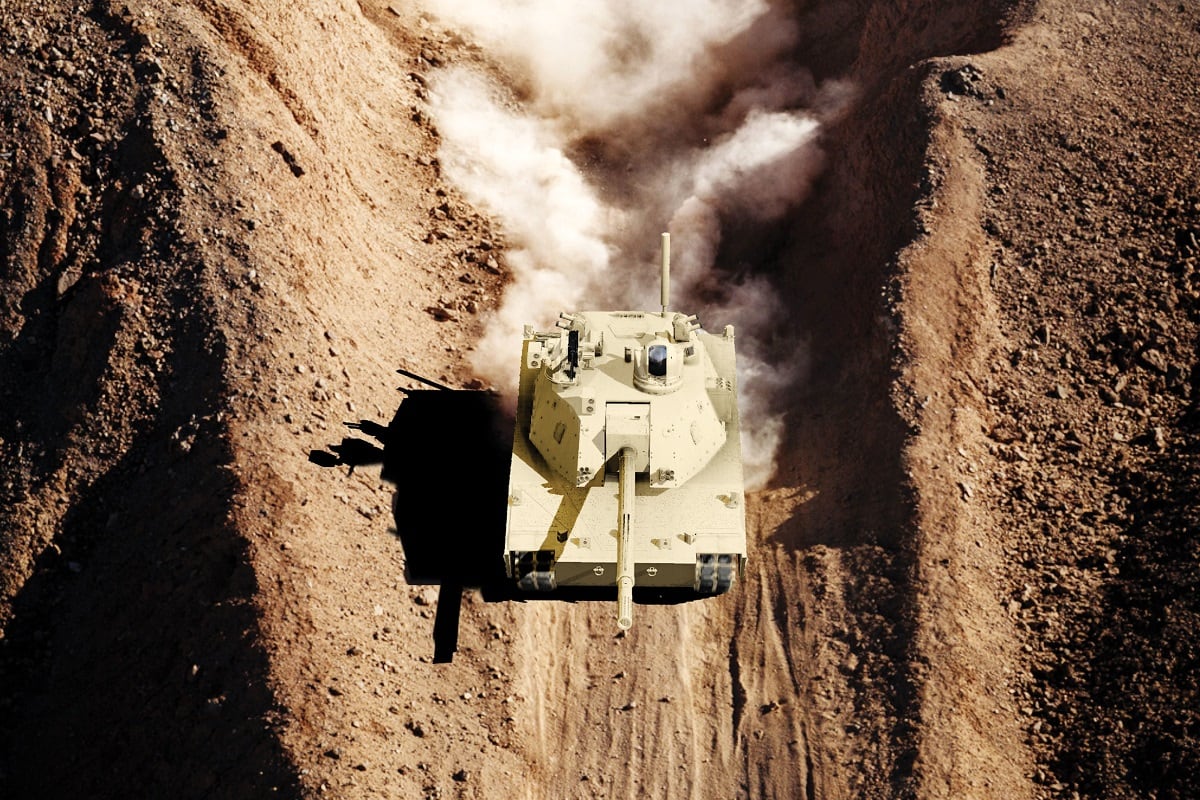PARIS, France — Rheinmetall lifted a curtain, literally, complete with smoke and ‘80s rock, on its new Lynx KF41 infantry fighting vehicle at Eurosatory on June 12, setting its sights on meeting requirements for both European and U.S. future combat vehicles.
“Do current fighting vehicles meet the needs of future forces? This was the question that started Rheinmetall on a journey to develop a Lynx family of vehicles,” Ben Hudson, the head of the company’s vehicle systems division, said at Eurosatory just ahead of the unveiling.
Hudson said militaries around the world are rethinking requirements, and it is clear that in order to meet all the demands of future operations and potential peer-on-peer conflict that a vehicle needs “to provide utility across the spectrum of conflict” and have “the ability to conduct peer-on-peer warfare against emerging battlefield threats.”
The U.S. Army has set developing a Next-Generation Combat Vehicle, or NGCV, as one of its top-six modernization priorities.
RELATED

The impact of these new requirements on vehicle design is extreme, Hudson said, and in order to protect against and defeat all threats at once, it means either having a vehicle that weighs well above 50,000 kilos or one that is “rapidly and affordably reconfigured” to ensure survivability and capability for peacekeeping support, counterinsurgency or conventional war-fighting operations when appropriate.
Adversaries have spent recent years strengthening their capabilities in denying access to the enemy, electronic warfare systems, indirect fires and their own advanced combat vehicles, according to Hudson, and so a new vehicle to go up against that is necessary.
The Lynx KF41 with a Lance 2.0 turret “rebalances the key requirements in the areas of survivability, mobility, lethality, capacity, adaptability and transportability,” Hudson said, and is reconfigurable using open-architecture systems and a modular and open mechanical architecture.
The modularity allows the vehicle to be reconfigurable. Configurations might include armored personnel carriers suitable for peacekeeping and conventional mounted combat operations.
Rheinmetall demonstrated at the show that it could change from the current configuration to a hybrid command variant in a matter of hours.
The vehicle design is also “highly scalable,” Hudson said, with more than 18,000 kilos of reconfigurable payload and an internal volume that allows for the turret and up to nine seats in the back.
The new vehicle is fitted with an 850-kilowatt power pack that uses the Liebherr engine and Renk transmission.
Additionally, in order to power the digital backbone and all the other weapons systems, more than 20 kilowatts of electrical power is stored on board to allow the crew to conduct missions.
The Lance turret has enhanced 360-degree protection against kinetic and fragmentation threats and sports the new Wotan 35 electrically driven cannon that fires 35x228mm ammunition.
The turret also has two flexible mission pods on either side of the turret that allow customizable subsystems such as anti-tank guided missiles, non-line-of-sight loitering munitions, UAVs or an electronic warfare package.
And Rheinmetall wants the world to know this is a real vehicle. The company has publicly available footage of the vehicle’s rigorous test campaigns, Hudson noted. And because it’s real, Hudson said he hoped it would give the company an edge with the U.S. Army’s full-speed effort to build its NGCV.
“We are highly interested in it, and we have been below the radar for a little for the last couple of years while we’ve delivered this,” Hudson told Defense News following the unveiling. “We don’t want to deliver a PowerPoint, we want to deliver a real vehicle, and we have shown this to some people in the U.S. Army and I think it is fair to say there is some genuine interest for the U.S. to look at this vehicle as a serious competitor for the Next-Generation Combat Vehicle.”
The path the Army is currently heading down is a rapid prototyping effort to help inform requirements for an NGCV. The plan is to assess emerging technologies.
RELATED

When asked how Rheinmetall might become involved in that collaboration, Hudson said there have been a lot of changes over the past several months as the Army’s new cross-functional team under its new Futures Command moves forward with efforts to bring an NGCV capability online.
“All I can say is the next six months for that program are going to be very interesting, and we look forward to things that may occur early next year. That’s all I can really say about that for now,” he said.
Jen Judson is an award-winning journalist covering land warfare for Defense News. She has also worked for Politico and Inside Defense. She holds a Master of Science degree in journalism from Boston University and a Bachelor of Arts degree from Kenyon College.







